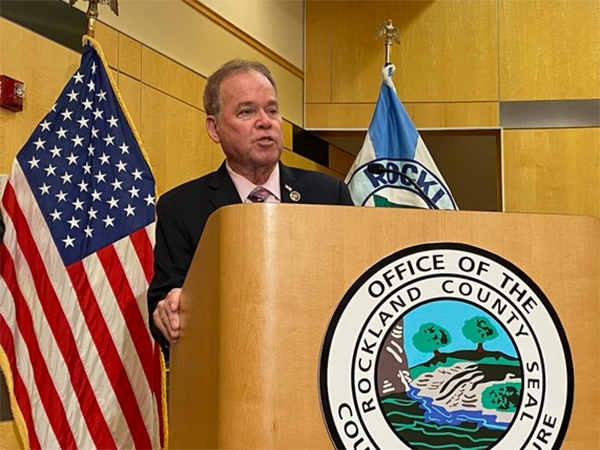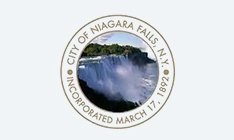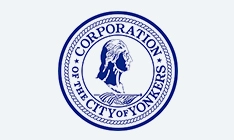
Governments cannot approach the budgetary process from a “point in time” perspective. To be ready for the future, they must identify and account for the trends impacting its fiscal indicators. CGR has a strong reputation for understanding the “big picture” of local issues and how they impact government’s bottom line. Our experienced team understands the nexus between public services and finances and recognizes that communities require budgetary action plans that reflect their unique characteristics, demands and expectations. For over 100 years, local governments and school districts have turned to CGR’s expert guidance to navigate budgetary and service delivery challenges. We have developed strategic action plans with governments of all types, shapes and sizes.
Featured Work
The New York State Financial Restructuring Board for Local Governments

The New York State Financial Restructuring Board for Local Governments engaged CGR (via the State Division of the Budget) to assist the Board in conducting comprehensive reviews of four cities – Niagara Falls, Rochester, Syracuse and Yonkers – seeking assistance to address substantial fiscal challenges. CGR conducted top-to-bottom reviews of baseline / existing conditions to “size” the fiscal challenges the cities faced and then identified potential opportunities to enhance efficiency and effectiveness. In all four cities, this included a detailed review of every department, including analyses of operations, staffing and capital needs. Opportunities identified in CGR’s final reports spanned three broad categories: cost savings, revenue enhancement and process improvement. The Board used CGR’s reports to recommend efficiency improvements and identify areas for targeted funding to improve the stability of the cities.
City of Syracuse, NY, 2018
Opportunities identified by CGR included leveraging workforce turnover to revise employee time off / health insurance benefits; adjusting the police shift structure; shifting to a semi-automated waste collection system; exploring shared back-office functions with the school district; billing for City-provided EMS services (or fully privatizing the function); updating fee schedules; sharing records management with the County; sharing information technology with the County; and implementing a centralized ERP-Human Capital Management system.
City of Yonkers, NY, 2018
CGR identified opportunities including leveraging workforce turnover to adjust employee health benefits; negotiating a new salary schedule for future teacher hires; changing shift structures for police and fire to optimize deployment; consolidating dispatch operations; eliminating unlimited paid time-off for public safety employees; improving timekeeping systems; adding a franchise fee to the City’s current ambulance contract with a private vendor; and creating a solid waste enterprise fund to remove garbage costs from the tax levy and provide additional Constitutional taxing margin.
City of Niagara Falls, NY, 2016
CGR’s work on the Board’s behalf spanned two directly relevant task areas. First, reviewing baseline / existing conditions to “size” the fiscal challenges the City faces. Second, identifying potential opportunities for enhancing efficiency, effectiveness and/or economic vitality. Part of this second element included completing a “Summary Index of Municipal Services” that synthesized key data elements, including expenses and revenues, in common functional areas across the City and it neighboring municipalities. CGR’s recommendations are under active consideration by the Financial Restructuring Board and will inform the Board’s final recommendations and any proposed restructuring grant opportunities the state may provide to the City.
City of Rochester, NY, 2014
CGR’s work on the Board’s behalf involved reviewing baseline / existing conditions to inform potential opportunities for enhancing efficiency within the City itself and identifying potential opportunities in collaboration with the Rochester City School District, the five towns that border the City, and Monroe County. CGR’s recommendations were relied upon by the Board in formulating its own final recommendations to the City, as well as to identify efficiency incentive grants the state offered to the City.
Comprehensive Review of the County Executive’s Proposed Budgets for 2018 to 2022

Starting in 2017, the Rockland County Legislature engaged CGR to review and analyze the proposed 2018 Executive Budget for Rockland County. The group chose to work in partnership with CGR for the subsequent four years. Each year, our report has several components:
- Review of a series of contextual elements, including budget priorities, economic trends, and alignment with community plans.
- Analyze the proposed budget on a fund basis looking for, major year-over-year changes.
- Perform a line-item review, identifying potential cost or revenue line-items where there maybe additional budgetary flexibility to adjust appropriations or revenues within the context of a balanced budget.
- Benchmark the County’s financial picture against several peers.
- Presented a summary of key budgetary elements including staffing, vacancies, pension benefits, health insurance costs, sales tax projections and the impact of proposed program changes to the Legislature .
Based on CGR’s analysis, the Legislature enacted the proposed spending plan into law in advance of the start of the fiscal years. In whole, we found that the county executive presented a balanced budget, the level of speculation in the budget was reasonable, the sales tax revenue estimates were conservative, and positions in county government were adequately funded.
The Rockland County budget included around $800 million in spending across eight separate funds. CGR’s annual line-item reviews identified several areas where assumptions could be adjusted to either reduce property taxes, modify apportions or to expand programs. The items were considered by the Legislature for action based on the community’s priorities. The recommendations have led to an elimination of a proposed property tax increase, the adjustment of funding for open positions, and the elimination of a motor vehicle tax.










